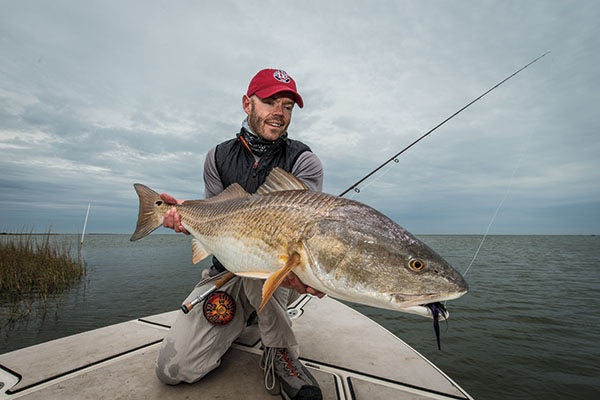
Greys Fly Reels — A Deep Dive
Share
Greys Fly Reels — A Deep Dive: history, design, and how to choose the right one
Greys is a name that sits comfortably in the vocabulary of anglers who value classic design, careful engineering, and reliable performance. Known primarily as a British company with a long heritage in fly-fishing tackle, Greys has produced a wide range of rods, reels, and accessories aimed at beginners through experienced anglers. This article unpacks what makes Greys fly reels noteworthy: their design philosophy, common construction choices, the types of reels they make, who should buy them, how to care for them, and how to choose the right Greys reel for your fishing.

A quick note on heritage and brand identity
Greys’ reputation comes from decades of making accessible, well-engineered equipment. Where some brands emphasize premium, hand-finished boutique reels or cutting-edge materials, Greys tends to sit in the middle: not mass-market disposability, but also not boutique exclusivity. Their products are usually aimed at anglers who want sensible performance, decent durability, and good value. That positioning influences every design decision — simple, serviceable drag systems, conservative styling, and materials chosen to balance cost, strength, and weight.
What makes a Greys reel — design philosophy and core features
Several recurring themes appear across Greys fly reels:
1. Practical, proven mechanisms.
Greys often uses drag systems and click-and-pawl mechanisms that prioritize reliability and ease of maintenance over exotic complexity. For many anglers, this means a reel that you can trust on the water and that won’t require specialist tools to service.
2. Balanced weight and robustness.
Greys reels are designed to pair well with their rods and common rod weights. They aren’t obsessed with shaving every gram off the drum; instead they aim for a feel that balances backing capacity, spool size, and enough mass for smooth line pickup.
3. Classic aesthetics.
The styling tends toward subdued, timeless looks — machined aluminum finishes, simple machining patterns, and conservative color options. This appeals to anglers who prefer a reel that ages gracefully rather than stands out as a fashion statement.
4. Value-oriented materials and manufacturing.
Expect machined or cast aluminum, corrosion-resistant coatings, sealed bearings on some models, and reliable hardware. Greys aims to deliver good performance at a price that makes sense for many fishermen and women.
Types of Greys fly reels — what you’ll commonly find
Greys’ catalogue typically covers reels for the main fly-fishing disciplines. You’ll see recurring categories:
Freshwater reels (trout, grayling, panfish)
These are generally lightweight, with spool diameters and arbor sizes matched to rod weights in the 1–6 range. They prioritize smooth retrieval and are often offered with either classic click-and-pawl drags or simple sealed drag systems.
Versatile reels (all-rounders)
Designed to handle a range of rod weights (e.g., 5–7), these reels pair with streamer fishing, small stillwater work, and general-purpose trout setups. They often have slightly larger arbors to accelerate retrieval.
Saltwater & coastal reels
When Greys makes saltwater-specific reels, the emphasis is on corrosion protection (anodized finishes, robust drag seals) and increased backing capacity. The drag systems tend to be stronger and more heat-resistant to cope with big, powerful fish.
Big-game/Giant arbour reels
For heavier rods and spey or saltwater applications, Greys offers larger frames and more backing capacity. These reels focus on strong, smooth drag performance and easy line management.
Drag systems: what to expect
A reel’s drag system is its heart. Greys tends to offer two broad drag categories:
Click-and-pawl / mechanical drags
Simple, reliable, and easy to service — this mechanism uses a pawl that engages with teeth on the spool to provide resistance. It’s light, predictable, and has that satisfying “classic” sound some anglers like. The downside: under heavy continuous loads it’s not as smooth or fade-resistant as modern sealed drags.
Sealed disc drags (or sealed mechanical variants)
On some models, Greys uses sealed drag units with synthetic discs that provide smoother, more consistent resistance and better heat dissipation. These are preferred for saltwater or when targeting larger, hard-running species. They’re generally pricier but give better long-run performance.
Which is “better”? It depends on use. For small- to medium-sized freshwater fish, a well-built click-and-pawl reel is perfectly adequate. If you chase powerful saltwater species or large migratory trout/sea trout, a sealed disc-style drag is more appropriate.
Materials and manufacturing: balance of cost and durability
Greys typically uses aluminum (either machined or cast) for frames and spools — a standard choice that balances strength and weight. Finishes vary, but anodizing and corrosion-resistant hardware are common on models intended for wet environments. Bearings may be single or multiple, depending on price point, and many mid-tier Greys reels use sealed bearings where smooth retrieve is a priority.
The company also focuses on practical spool design (single-piece spools on many models), secure spool retention systems, and accessible clickers/drags for field adjustments. You won’t usually find luxury materials like titanium or exotic carbon fiber on mainstream Greys reels — those are reserved for higher-end boutique makers — but you will get solid, serviceable construction.
How to choose the right Greys reel for you
Here’s a practical decision path — simple questions that will guide a purchase:
1. What species and water?
* Small trout in streams: choose a lightweight, small-arbor reel matched to rod weight (1–4).
* Large stillwater or streamer fishing: pick a medium-arbor reel with solid drag for faster retrieves.
* Saltwater/coastal fishing: select a sealed-drag, corrosion-resistant model with extra backing capacity.
2. Do you want classic simplicity or high-performance drag?
* Classic: click-and-pawl reels are lighter and easy to maintain.
* Performance: sealed disc drags handle long runs and heat better.
3. What rod weight will you pair with the reel?
Always match drum diameter (not just stated rod weight) and arbor size to the line weight and retrieve speed you prefer. Greys usually specify compatible rod weights for each reel.
4. Budget and long-term plans.
If you plan to progress to larger species or saltwater, spend a little more now on a sealed drag and corrosion protection. If you want a solid general trout reel, the mid-range Greys options typically give the best value.
Maintenance: keep it working for years
A reel is simple to look after if you follow a few rules:
* Rinse after saltwater: Always rinse with fresh water after salt exposure. Don’t submerge the drag unit in running water, but a light rinse and wipe will remove salt residue.
* Periodically service the drag: For click-pawl reels, a little light oil on the pawl works; for sealed drags, follow manufacturer guidance — occasional light maintenance will extend life.
* Inspect for corrosion: Check screws, spool tabs, and the interior for early signs and address them quickly.
* Lubrication: Use the right products — light reel oil for bearings and light grease sparingly for gears where recommended. Over-greasing can attract dirt and degrade performance.
* Storage: Keep reels in a dry place out of direct sunlight. If storing for months, back off drag tension to prevent compression of drag materials.
Greys reels are designed so basic field maintenance and part replacement are straightforward — a plus if you like to tinker.
Comparing Greys to other brands — where it stands
Greys sits in a practical middle ground. Compared with boutique or premium reel makers, Greys may not have ultra-light CNC exotic-material reels or the very highest-end sealed drag systems. However, compared with entry-level mass-market reels, Greys usually offers better engineering, more durable materials, and a longer lifespan.
If you want prestige and cutting-edge tech, you’ll look at specialty reel manufacturers. If you want good performance at a fair price, with parts and service likely easier to obtain, Greys is a wise choice.
Typical use-cases and who will love Greys reels
* Beginner to intermediate anglers who want gear that performs reliably without needing a big investment.
* Club and guide kit owners who need reels that take a beating and can be maintained in the field.
* Anglers moving into saltwater on a budget — choose the coastal/saltwater models with sealed drags and proper anodizing.
* Collectors of classic-reel aesthetics who prefer understated, reliable equipment.
A buyer’s checklist — what to inspect when purchasing
Whether buying new or used, check the following:
* Spool release and fit: Smooth action and secure retention.
* Drag function: Smooth engagement across the range; test by applying steady pressure to the line.
* Corrosion/dents: Especially on used reels — pits in aluminum and corroded screws are red flags.
* Bearing condition: No grinding or wobble.
* Backup parts and service: Can you get spares (screws, pawls, drag shims) easily? Greys’ networks usually make this feasible.
If buying online, read reviews and check return policies. If buying used, ask for photos and a demonstration or a short video of the reel in action.
Customization and upgrades
Many anglers customize reels with different handles, drag greases, or even alternative spools for different lines. Greys reels are typically friendly to simple upgrades: swapping to a higher-capacity spool, replacing a handle, or maintaining the drag with higher-quality lubricants. But avoid crude, irreversible mods that could void warranties.
Frequently asked questions
Q: Are Greys reels good for saltwater?
A: Yes — but pick a model specifically designed for saltwater. Those reels include corrosion-resistant finishes and stronger drag assemblies.
Q: Can I service a Greys reel myself?
A: Generally yes. Click-and-pawl reels are particularly easy to service. Sealed drags are more involved — check the user manual.
Q: How do Greys reels perform compared to top-end brands?
A: They deliver reliable performance at a lower price point. Top-end brands may beat them on ultra-light weight or drag refinement, but Greys offers better value for many anglers.
Final thoughts — is a Greys reel right for you?
If you value a combination of sensible engineering, reliability, and value, Greys fly reels are a compelling option. They are especially fitting for anglers who want equipment that will stand up to regular use without premium pricing. Whether you’re starting out and want a single dependable reel that can do multiple jobs, or you’re a seasoned angler looking to kit out a guide boat or put a reliable backing on a coastal rod, Greys balances the factors that most of us care about: build quality, serviceability, and a good on-water feel.
Reels are personal — they’re the tool that gets to tug on a fish’s will. Greys doesn’t try to be the flashiest brand on the bank. Instead, they aim to be the reel you reach for when you want something that just works, season after season. If that sounds like your kind of kit, a Greys reel deserves a spot on your rod.
